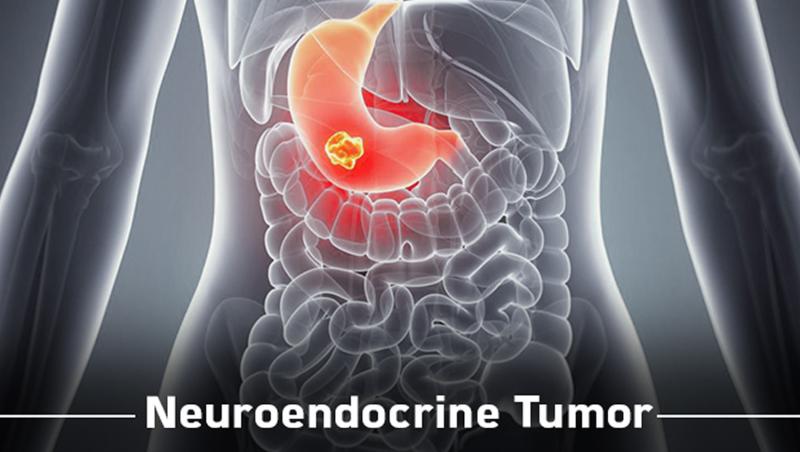Neuroendocrine tumors (NETs) are a group of cancers that begin in the neuroendocrine cells of the body. These rare tumors can develop in tissues and organs that are part of the endocrine (hormone) system such as the lungs, stomach, intestines, pancreas, and liver. For many years, treatment options for NETs were limited. However, in recent times significant progress has been made in developing new targeted therapies and personalized treatment approaches.
Molecular markers aiding diagnosis and staging
One of the major advances has been the identification of specific molecular markers that can help characterize NETs. Detecting markers like chromogranin A, pancreatic polypeptide, neuron-specific enolase, synaptophysin through blood tests and tissue biopsies allows for more precise diagnosis and staging of NETs. Knowing the grade and stage of the tumor is crucial for determining the appropriate treatment plan. Molecular testing also identifies patients who are more likely to benefit from targeted therapies such as somatostatin analogs which interfere with molecular signals driving tumor growth.
Advances in surgery
Surgery is often the primary Neuroendocrine Tumor Treatment for localized NETs to remove the tumor itself. Minimally invasive surgical techniques using laparoscopy and endoscopy have significantly reduced trauma, recovery time, and complications for patients undergoing NET resection. Advances in imaging like intraoperative ultra sonography aid surgeons in precisely locating and removing tumors while avoiding damage to nearby tissues and organs. For advanced NETs with metastases to the liver, newer surgical strategies involving two-stage hepatectomies or associating liver partitions with portal vein embolization have expanded resectability options.
Targeted drug therapies
A major breakthrough has been the development of targeted drug therapies that block specific molecular pathways driving NET growth. Somatostatin analogues like octreotide and lanreotide work by mimicking somatostatin hormone to regulate hormone secretion and decrease tumor growth. Everolimus and sunitinib are kinase inhibitors that target the mTOR and VEGFR pathways respectively and have shown efficacy in pancreatic and gastrointestinal NETs. Peptide receptor radionuclide therapy utilizes radiolabeled somatostatin analogues that deliver radiation directly to NET lesions expressing somatostatin receptors. PRRT has emerged as an effective treatment for inoperable, metastatic NETs.
Personalized combination treatments
Novel combination treatment strategies are being explored to maximize outcomes for NET patients. Combining somatostatin analog therapy with other agents like everolimus or cytotoxic chemotherapy is a promising approach. Dose intensification, dose sequencing and scheduling of the various treatment modalities are being individually tailored based on the molecular profile of each patient's tumor. This personalized approach aims to minimize toxicity while optimizing tumor response. Other ongoing research evaluates the benefits of adjuvant therapies given in combination with surgery. With collaboration between medical oncologists and surgeons, treatment plans are becoming highly customized for each NET case.
Advances in assessing treatment response
Traditionally, treatment response in NETs was evaluated using conventional imaging like CT scans every 6-12 months as per the RECIST scale. However, slow growing NETs may not show significant changes in size even after long periods. Newer functional imaging techniques and biomarkers provide finer resolution to track early treatment response. OctreoScan which detects somatostatin receptor expression changes and 68Ga-DOTATATE PET/CT which traces glucose metabolism alterations, allow response monitoring within just 3 months of starting therapy. Declining levels of chromogranin A in blood correlate with tumor shrinkage and help gauge response to targeted therapies. These sensitive techniques enable timely changes in management strategies.
Improved patient quality of life
While surgery and other treatments control tumor growth, considerable progress has been made in symptom management for NET patients. Antidiarrheal, antipalpebral, antidepressants and hormonal therapies significantly relieve functional syndrome and hormonal excess toxicity issues associated with various NETs. Somatostatin analogs play a major role in controlling hormonal hypersecretion. Management of adverse effects from targeted therapies using dosage adjustments, medication holidays and complementary methods have improved tolerability. Overall, multidisciplinary support for physical, mental and social well-being has risen patient quality of life enabling better outcomes long term.
There have been major advances in the diagnosis and treatment of neuroendocrine tumors in recent times driven by a better understanding of disease biology. Personalized treatment combining surgery, molecular targeted therapies and symptomatic management tailored for each patient's tumor profile has improved survival rates. Continued research focusing on combination therapies, functional imaging and molecular characterizations hold promise to further advance care for patients with neuroendocrine tumors.
Get more insights on this topic: Neuroendocrine Tumor Treatment
